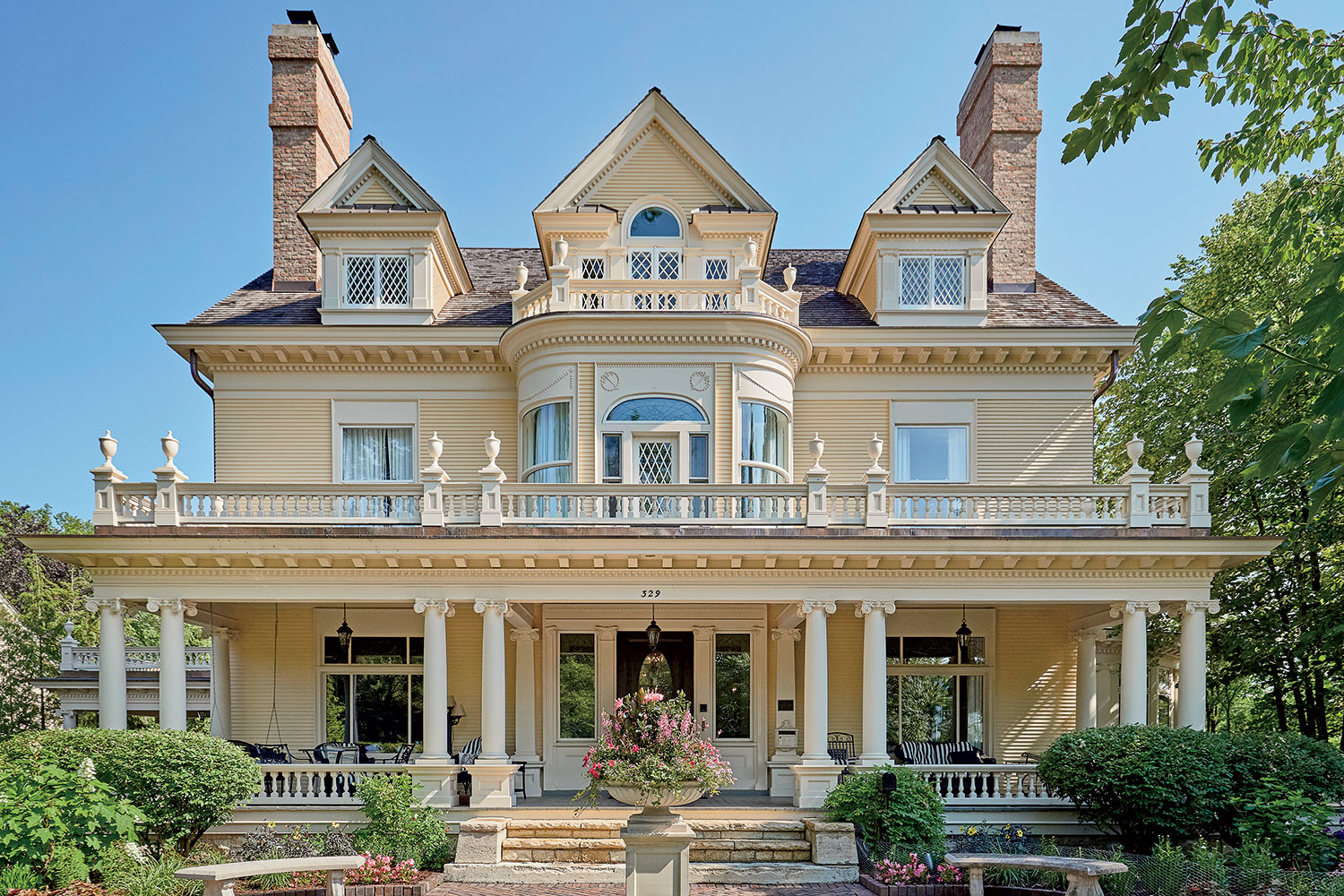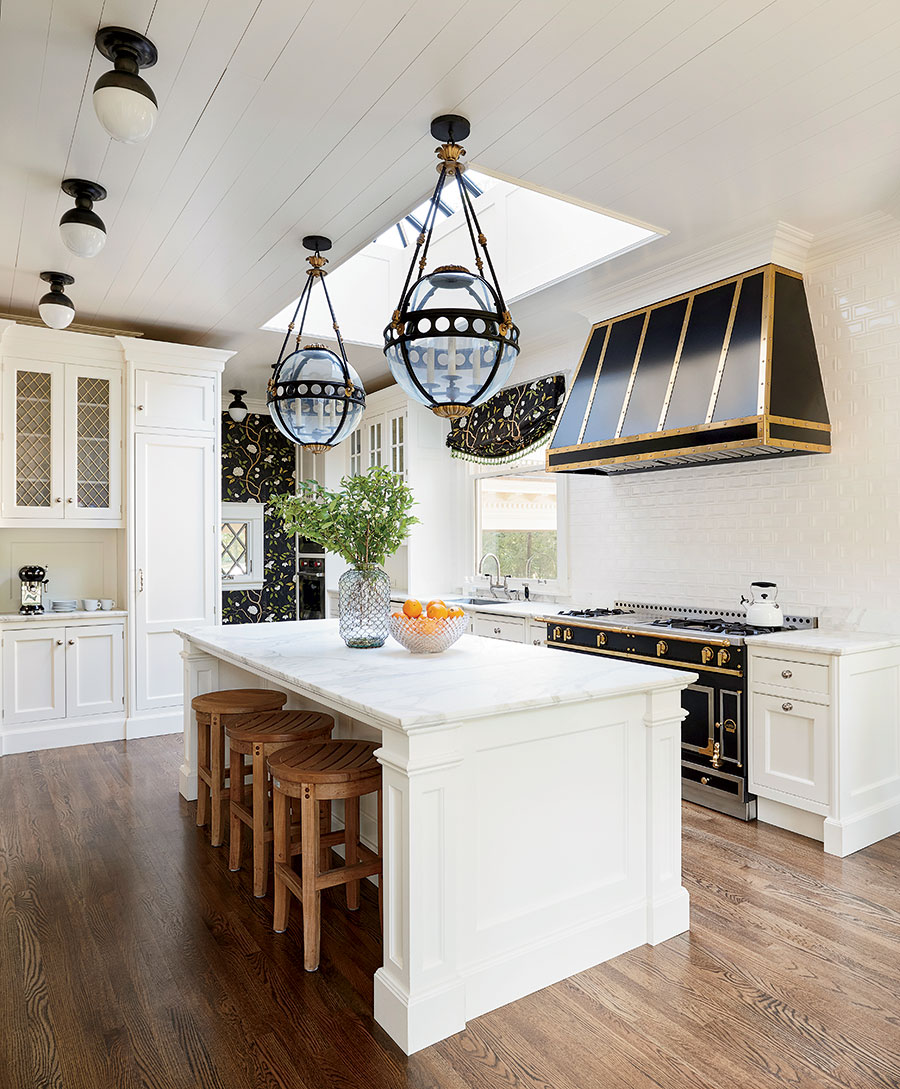
Out of the ashes of disaster can sometimes come beauty. Such was the case for Hinsdale couple Jennifer and Neal Reenan. They purchased a stunning Colonial Revival in 2016 and were still doing roof repairs two years later when the portico of the 119-year-old house caught fire. It didn’t burn to the ground, but extensive water damage meant the only way to save the six-bedroom home, which is on the National Register of Historical Places, was to rebuild it from the inside out.
The Reenans asked builder Dave Knecht of Hinsdale and architect Michael Abraham of Clarendon Hills to study archival photos at the Hinsdale Historical Society to restore the “American Beauty,” as it had been dubbed by neighbors (the original owner, Orland P. Bassett, was a horticultural hobbyist who grew that rose variety onsite), to its fin-de-siècle splendor.
During the six months the house spent under mitigation, the team unearthed gorgeous stone and tile fireplace surrounds and original millwork, which Knecht saved and reused throughout the home during renovation. They also discovered blueprints for leaded-glass transoms and stained-glass windows. Drawings revealed that the third floor was meant to be a ballroom and that the basement could be expanded to create space for an Irish pub (a nod to Neal’s home country). Interior designer Elizabeth Krueger was down for it all.
“Jenny was very enthusiastic and was a big part of the process,” says Krueger, who’s based in West Town. Her client would spend hours on auction websites at night, then email her in the morning about the artwork she’d purchased. “We had all the art sent to our office to inventory, and it was everywhere — not kidding,” Krueger says with a laugh. “We worried we wouldn’t have enough walls, so we used a few opportunities, like along the stairs, to load up portraits. She was OK with ‘more is more,’ which is so fun.”
Now guests cross the wraparound porch to enter through the vestibule, where new leaded windows drench with sunlight the 19th-century tiles found during demolition. Up the portrait-lined stairs, which are illuminated by stained glass, each bedroom has its own fanciful style and a bathroom to match. Downstairs, a fireplace framed in Pewabic tiles from Detroit anchors a moody living room with exposed beams. Barrel-vaulted ceilings give shape to the basement snooker room and cypress bar.
Today, after 20 months of mitigation and restoration, the home would make Mr. Bassett blush. “There is a refinement,” says Krueger. “It’s not overly gilded and carved, but it has its ornate moments. It feels like a balanced modern-day interpretation of what this 1899 home could have looked like.” With, she notes, one notable difference: “This time, it’s fully fireproofed.”
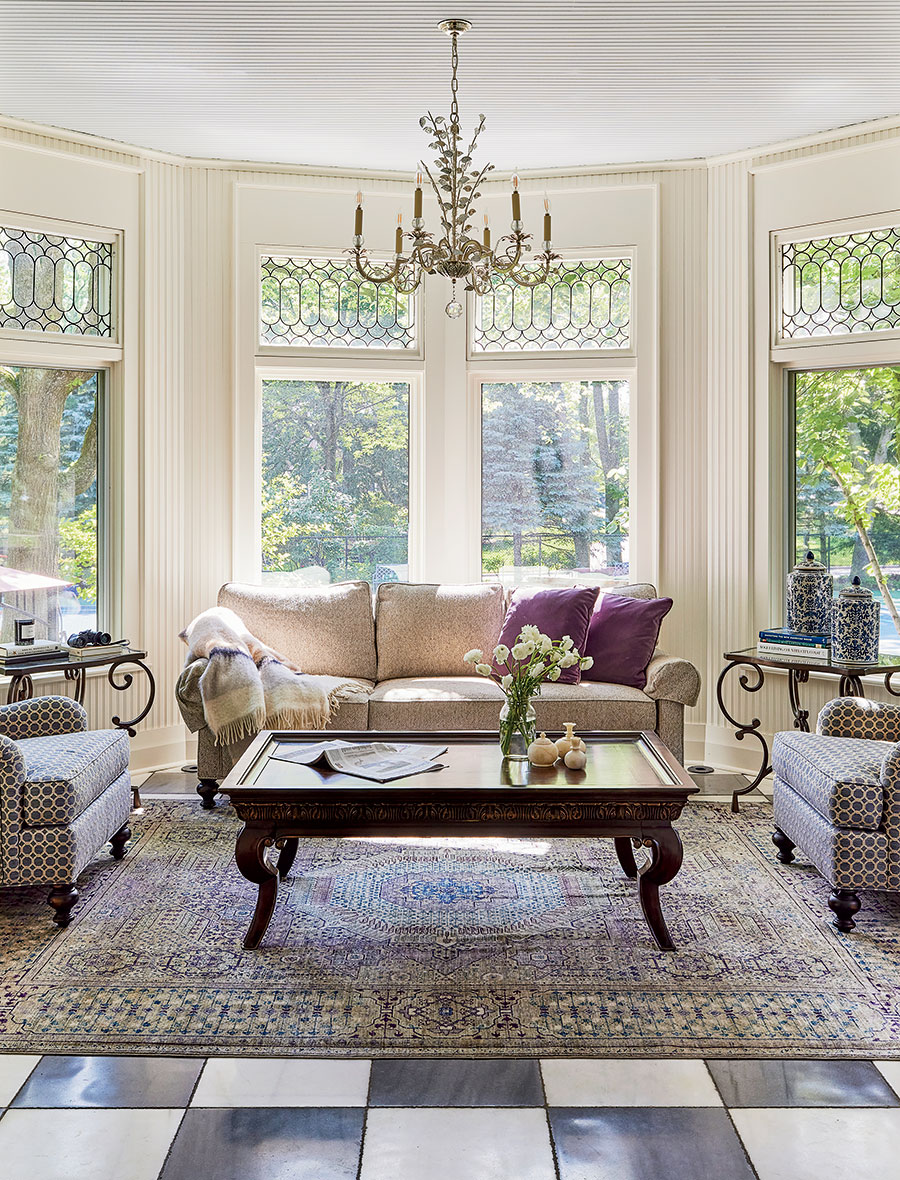
LIVING ROOM Interior designer Elizabeth Krueger used the couple’s existing soft furnishings to give a comfortable feel, while maintaining a traditional, period-appropriate look with lighting.
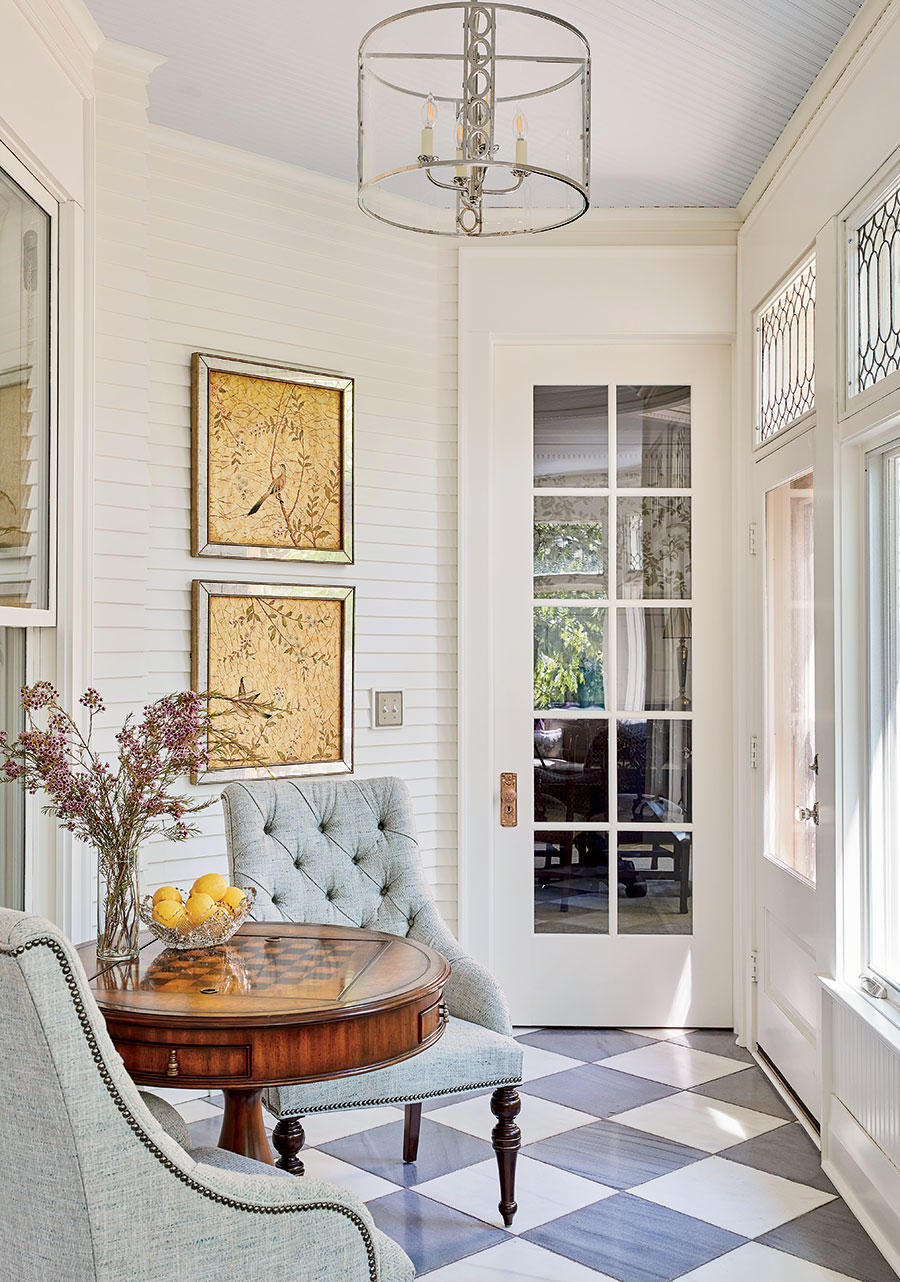
SUNROOM Krueger left the windows intact and sourced marble floor tiles antiqued by hand with tea stain. They were installed in a harlequin pattern by Gebauer Stone & Tile.
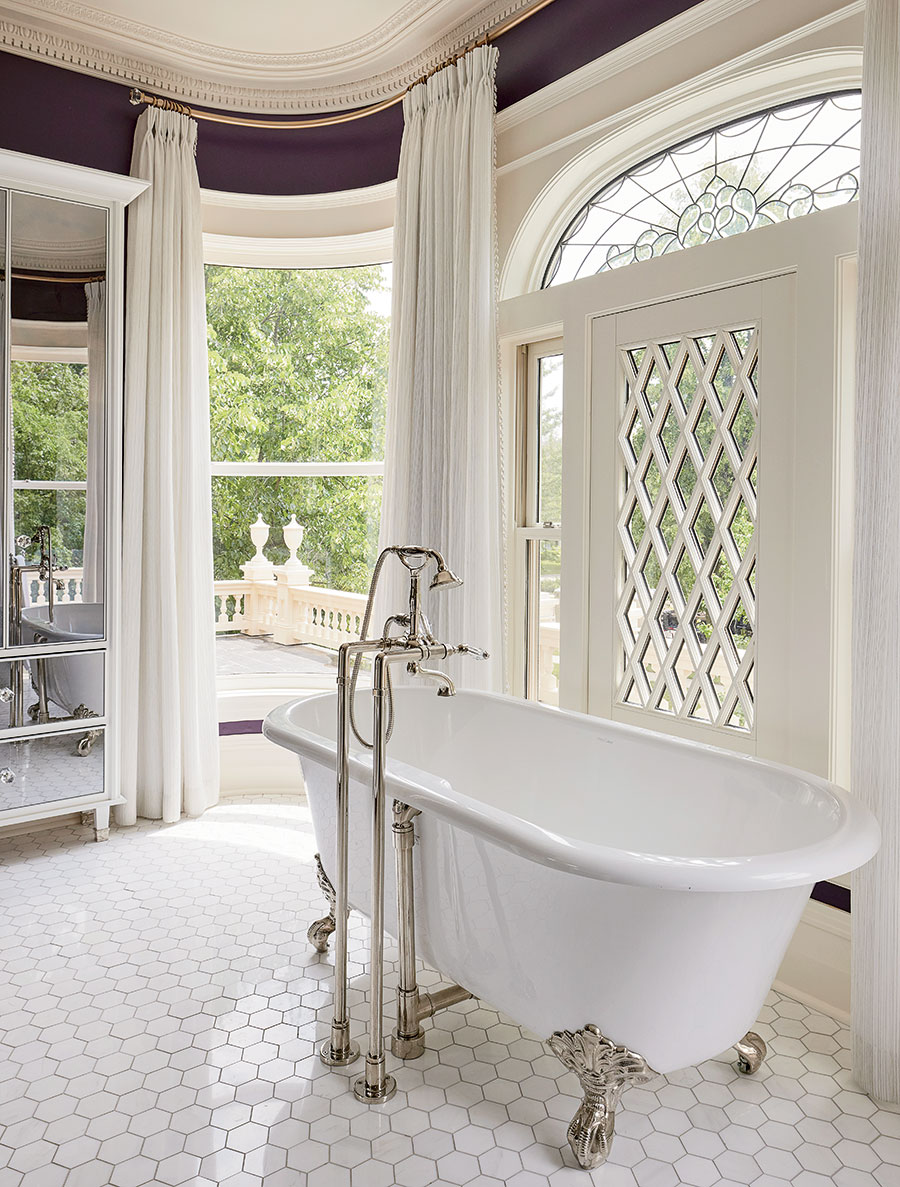
BATHROOM The daughter’s bathroom features a freestanding clawfoot tub set in front of the existent trellised glass door to a small balcony. Custom-crafted plum paint by Farrow & Ball adds drama.
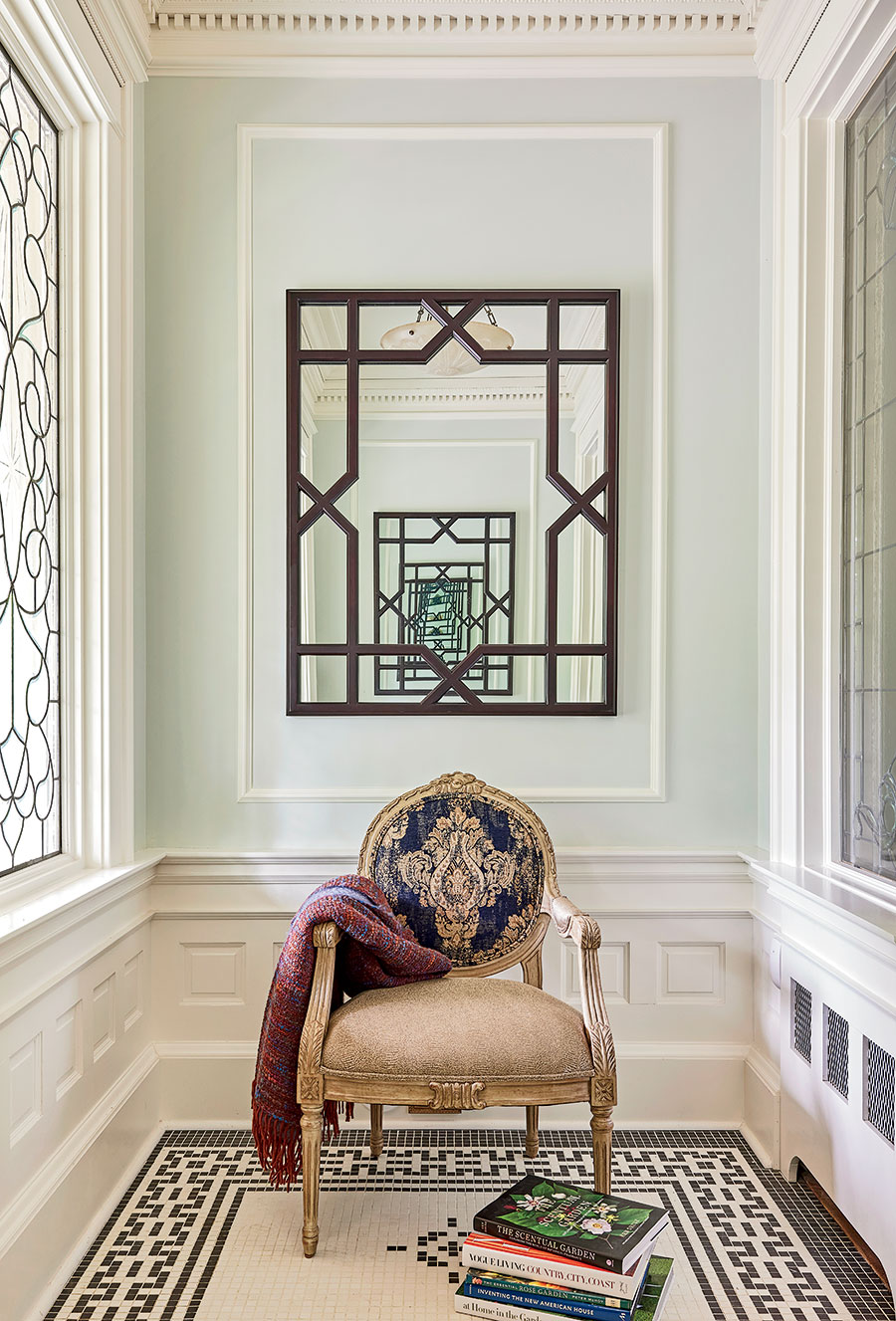
ENTRY VESTIBULE This area is important to the home’s design, introducing a thoughtful balance of old and new. “It sets the tone,” says Krueger.



